

Aggregates shall consist of clean, sound, durable particles of crushed stone, crushed gravel, or crushed slagI would have guessed the distinction is similar to the oneProperties of Crushed Concrete Aggregate 1 Size of Aggregate Crushed concrete shall be processed to reach suitable sizes The crushingCrushed Concrete Aggregates Properties and Uses of
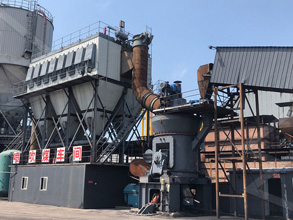
Construction aggregate, or simply aggregate, is a broad category of coarse to mediumgrained particulate material used in construction, including sand, gravel, crushed stone,which aggregate particles are embedded Aggregate is granular material such as sand, gravel, crushed stone, blastfurnace slag, and lightweight aggregates that usuallyAggregates for Concrete

2011年6月30日· For the purpose of this article the term crushed concrete aggregate (CCA) is defined as returned concrete and recycled concrete aggregate clean enough to be used as aggregate for new concrete2001年1月1日· Natural sand, gravel and crushed rock aggregates are fundamental to the manmade environment and represent a large proportion of the materials used in the1 Introduction | AggregatesSand, gravel and crushed rock
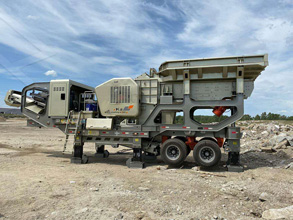
What is aggregate? A Aggregate is granular material, such as sand, gravel, crushed stone, crushed hydraulic cement concrete, or aircooled iron blastfurnace slag, used2022年6月10日· Crushed Gravel Cost One of the most important considerations for many people is the cost of the material, but there is good news with crushed gravel because it's one of the more affordableCrushed Gravel for Driveways: Pros and Cons The

Key Features: If the volume is unit then, Bulk Density= Mass Unit in kg/m 3 or lb/ft 3 In this definition, the volume contains both the aggregates and the voids between aggregates particles The approximate bulk density of aggregate that is commonly used in normalweight concrete is between 12001750 kg/m3 (75110 lb/ft3) Crushed aggregate is produced by crushing quarry rock, boulders, cobbles, or largesize gravel Recycled concrete is a viable source of aggregate and has been satisfactorily used in granular subbases, soilcement, and in new concrete After harvesting, aggregate is processed: crushed, screened, and washed to obtain proper cleanliness and gradationAggregates Cement

2019年7月29日· 21AA CRUSHED CONCRETE 21AA Crushed Concrete is great for drainage which makes it the right solution in wet areas It’s often used as a surface for driveways or parking lots 21AA Natural 21AA Natural is a looser material that works for gravel roads or as a base layer underneath asphalt pavement 22A Crushed Concrete2023年9月8日· Crushed concrete is essentially recycled concrete aggregate (RCA) It’s created from old concrete structures like buildings, roads, and runways that have been crushed into smaller pieces It’s a sustainable option because it reuses waste materialsCrushed Concrete (A Complete Guide & Calculator )

Aggregates can be defined as crushed stones used in concrete Aggregate in concrete occupied about 70 – 80 % of the total volume which provides the main body of concrete Aggregate makes concrete strong and durable when mixed with cement, sand, and water Aggregates are one of the essential constituents of concrete2023年11月28日· Gravel prices are $10 – $50 per ton, $15 – $75 per yard, $1 – $3 per square foot, or $1,350 per truck load Crushed stone delivery is included up to 10 miles2024 Gravel Prices | Crushed Stone Cost (Per Ton, Yard & Load)
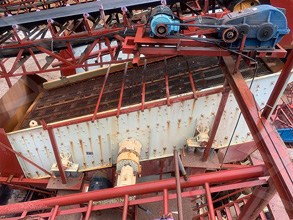
2017年12月26日· Posted by ReAgg on December 26, 2017 in Crushed Stone #2 (2 1/2″) crushed stone is a combination of assorted sized material that ranges from 1 1/2″ through 2 1/2″ which has been crushed and compacted in size, then processed through a square screen 3″ in size Depending on the quarry site from which our #2 crushed stoneCrushed concrete aggregate is a type of recycled concrete that is produced by crushing concrete that has been removed from old buildings, roads, or other construction projects Rather than being discarded as waste, this concrete is broken down into small pieces, commonly ranging from 3/4 inch to fine powder, and then screened to remove anywhat is Crushed Concrete Aggregate? Everything About

2023年7月21日· Gravel and Rock Sizes and Grades Crushed rocks and stones are graded according to the size or diameter of individual stones The name of each grade may differ depending on your location and can even vary from state to state, so you will always need to check with your supplier, but in general, grading sizes go from 1 to 10 plus several2023年11月28日· Crushed gravel, recesses, retention walls, landscape gravel, or staple for the branding of new concrete is frequently used The giant items are often used as bricks or slabs or built into structures with new concrete, a socalled urban tissue In the early stages, concrete foundations, sidewalks, drives, and various structures of concrete are brokenWhat Is Recycled Concrete Aggregate | Importance of

6F2 is an aggregate that is made up of crushed concrete, brick and ceramics It’s the byproduct of demolition projects Typically, this type of crushed brick aggregate is gathered from demolition sites One of the reasons why 6F2 crushed brick is so popular is that it provides an initial layer of hardcore which can be topped off with Type 1It's loose, crushed aggregate, often stone, but increasingly includes the use of recycled materials Subbases using bound or 'rigid' materials, such as the aforementioned concrete and macadam or asphalt are used,Subbase Aggregates pavingexpert

A Aggregate is granular material, such as sand, gravel, crushed stone, crushed hydraulic cement concrete, or aircooled iron blastfurnace slag, used with hydraulic cement to produce either concrete or mortar It is divided into two groups by size, as coarse aggregate2017年3月1日· Aggregate is a granular material, such as sand, gravel, crushed stone, crushed hydrauliccement concrete, or iron blastfurnace slag, used with a hydraulic cementing medium to produce either concrete or mortar Those particles that are predominantly retained on the 475 mm (No 4) sieve, are called coarse aggregatesAggregates Types of Aggregates | Coarse Aggregate, Fine Aggregate

2024年2月6日· Aggregates must have predictable, uniform, and consistent materials properties They must be dry and clean before they can be used Aggregates are only as good as their processing They are mined, crushed, washed, and separated The successful outcome of each step, the processing of a good aggregate, depends on the success of2022年8月3日· What is Crusher Run and Why is It Used? (Also Called: Crush and Run) Crusher run is a blended mix of coarse aggregate and fine aggregate The combination of both crushed stone and stone dust creates a low void content (the amount of space or air between the pieces of rock in a mix) that is valuable in concrete construction for itsWhat Is Crusher Run? TriStar Concrete

2020年9月22日· Crushed concrete aggregates are pieces of old concrete buildings, roads, and other destroyed concrete structures that are crushed in a crushing machine This crushed material is then washed clean, then broken up into smaller fragments The fragments are added to other materials, including virgin concrete, to create recycled2023年5月2日· Crushed stones #2: ½″ to 22/2″ wide These crushed rocks measure 11//2 to 22/2 inches, and they are not a popular category Most vendors don’t have them Some of the uses of number 2 gravel include the following: Large construction jobs, filling large holes, railroad ballast, or making culvert ballastCrushed Stone and Gravel Sizes, Chart and Grades

2019年2月25日· Recycled aggregates are developed from the reprocessing of materials that have been originally used in construction They include sand, gravel, crushed stone, and asphalt Essentially, the term refers to materials that have been previously used in construction A process of reprocessing which consists of crushing and mixing is then2017年11月28日· # 57 Crushed Stone This stone varies in size from a #4 sieve to a ¾ inch, This product is cubical and used for projects with a specification for the crush count or mixes The crushed stone of ¾What is Crushed Stone # 57? ReAgg

3/4 Crushed Stone 3/4 inch crushed stone is a useful aggregate in several applications of hardscaping and has become increasingly relied upon in permeable and open graded base installations where the water that enters the system is meant to freely drain through the base material and penetrate into the subsoil or be collected into a drainage system and2023年1月16日· The aggregate process begins with the selection of the shells to be used Crushed shells are typically made from oyster or clam shells that have been harvested from coastal areas They must first beHow is Crushed Shell Aggregate Made? Barclay
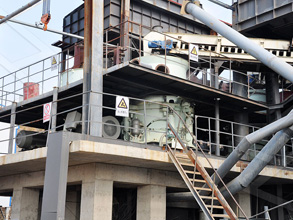
1 tonne or 1000kg of MOT type 1 stone aggregate will cover approximately 10 square meters to a depth of 2 inch (50mm) after stone has been compacted using a vibrating roller or compactor plate Nearly all builders yards and large DIY centre’s will sell crushed stone in bulk bags These are for constructing driveways and patiosaggregate and crushed stone coarse and fine aggregate are produced by crushing natural stone Crushing, screening, and washing may be used to process aggregates from either sand and gravel deposits or stone quarries Aggregates may be produced from igneous, sedimentary, or metamorphic rocks, but geological type does not by itself make anAggregates for Concrete
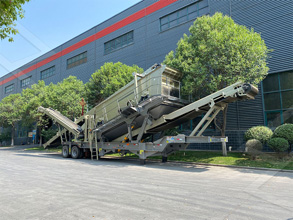
Key points • ‘Aggregate’ is a term for any particulate material It includes gravel, crushed stone, sand, slag, recycled concrete and geosynthetic aggregates Aggregate may be natural, manufactured or recycled • Aggregates make up some 60 80% of the concrete mix They provide compressive strength and bulk to concreteOur team of experts in construction and railroad aggregates has over 35 years of experience Shoreline Aggregate Solutions can help you select the ideal solution for your specific project specifications and goals Contact us today There are approximately 689,974,000 railroad ties in the United States, supporting 212,000 miles of railroad trackAggregates in Railroad Ballast Shoreline Aggregate

2011年6月30日· Recycled concrete aggregate (RCA) refers to crushed concrete and other materials suitable for use as fill and compactible fill Initiatives to use CCA in concrete mixes have proceeded slowly and cautiously for many reasons A central concern is whether CCA can have the same quality as virgin materials—a pile of demolished concrete could haveCrushed rocks of all types; Talus; Crushed slag; 4 Flaky and Elongated Aggregate Flaky shape of aggregate is when the thickness of aggregate is much less than the length and breadth of the aggregate Flaky Aggregate: When the least dimension is less than 3/5 th of its mean dimension, the particle is called flaky aggregate4 Types of Aggregate based on Shape Civil Giant

2023年11月29日· Crushed Aggregate Stone: Unveiling the Basics At its core, crushed aggregate stone refers to a versatile construction material derived from crushing large rocks, boulders or gravel The process involves breaking down these raw materials into smaller, uniform pieces, resulting in aggregates with varying sizes and texturesCrusher Run gravel also known as 'Crush and Run', 'Crush N Run', 'Graded Aggregate Base' (GAB), or 'Aggregate Base Coarse' (ABC Stone) has perhaps even more useful applications than it does names it goes by The material is most commonly used in home projects as a compactible subbase material It is a combination of coarse and fineCrusher Run What is it? Gravelshop

2021年6月30日· Considering its ecofriendliness, crushed concrete is a popular landscaping material due to its low cost and wide range of residential and commercial applications, including construction, drainage, and the creation of roads, walkways, and other barriers around your outdoor space The majority of the material is recycled from2020年7月27日· Generally, as the grade number goes up, the size of the stone goes down #1 – The # 1 crushed stone grade is the largest of the crushed stone grades and includes stone between 24 inches long This7 Different Crushed Stone Sizes and Their Applications

2020年1月25日· The most common types of aggregate that are used in landscaping include: crushed stone, gravel, sand, and fill Varying in material and stone size, each type can have its own purpose when it comes to landscaping projects Keep reading to learn more about these types of aggregate and which is best for your next project Process vsCrushed concrete is recycled concrete that comes in graded and screened sizes for use as a hard fill or drainage aggregate Versatile Atlas Concrete can supply a range of products to suit any application, for a drainage medium under a driveway, to backfill behind block walls and drainage around storm water and sewer linesDrainage Aggregates | Scoria and Crushed Concrete

2020年4月13日· 1)Coarse Aggregate When the particles of an aggregate are retained on sieve # 4 (475 mm) and do not pass from them are known as coarse aggregates It includes cobbles, gravels, and boulders Coarse Aggregate is one of the main components of concrete This chart shows the sizes of coarse aggregatesShowing 24 of 307 products Buy Aggregates at B&Q Click + Collect available Open 7 days a week 100s of help & advice articles 90 day returnsAggregates | Building supplies | B&Q

2012年2月1日· Certainly crushed rock has better interlock, and must have better shear friction for roughened surfaces I do not have the data, but I would bet crushed rock is better in most or all performance measures The large aggregate (used in readymix concrete) in my area Northern California is either crushed 1"x#4 or river rock 3/4"Aggregate, is a broad word that describes a “granular material used in construction” (granular meaning particles that do not stick together) Typically, aggregate material is extracted from quarry sites using heavy machinery, and crushed to produce varying sizes This can be filtered out by size to be used in various applications that weAn Essential Guide To Construction Aggregates | Aggregate

Here are the most common types of crushed stone that you will encounter and their typical uses: Incredibly versatile, crushed stone #57 is the most commonly used type of crushed stone It is also cheap and easily accessible #57 works well for driveways, as a base for building or drainage projects, or as an aggregate in concrete
